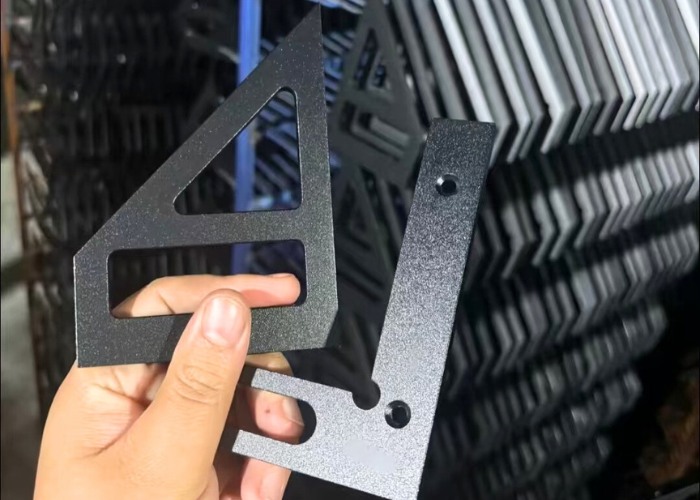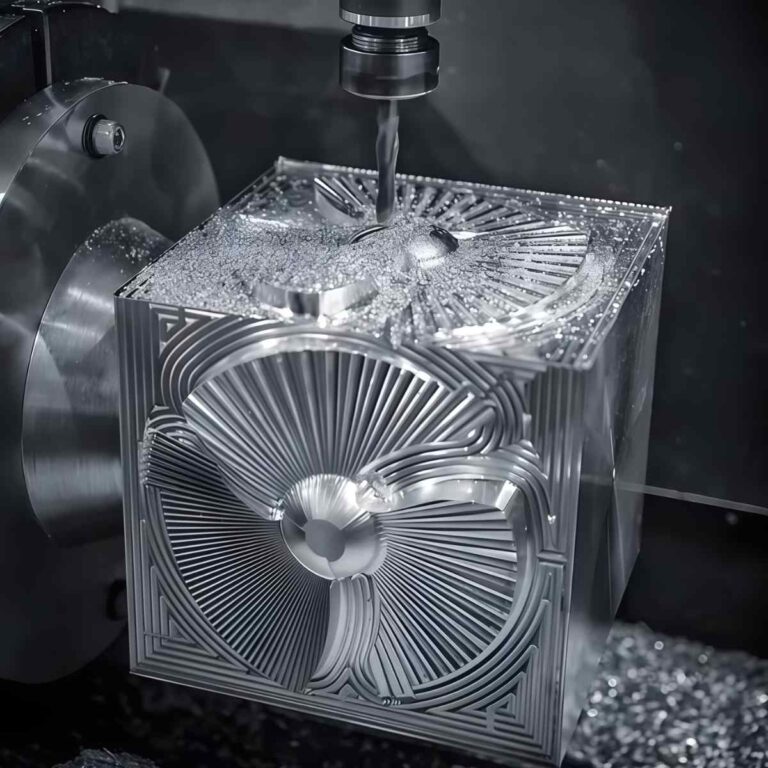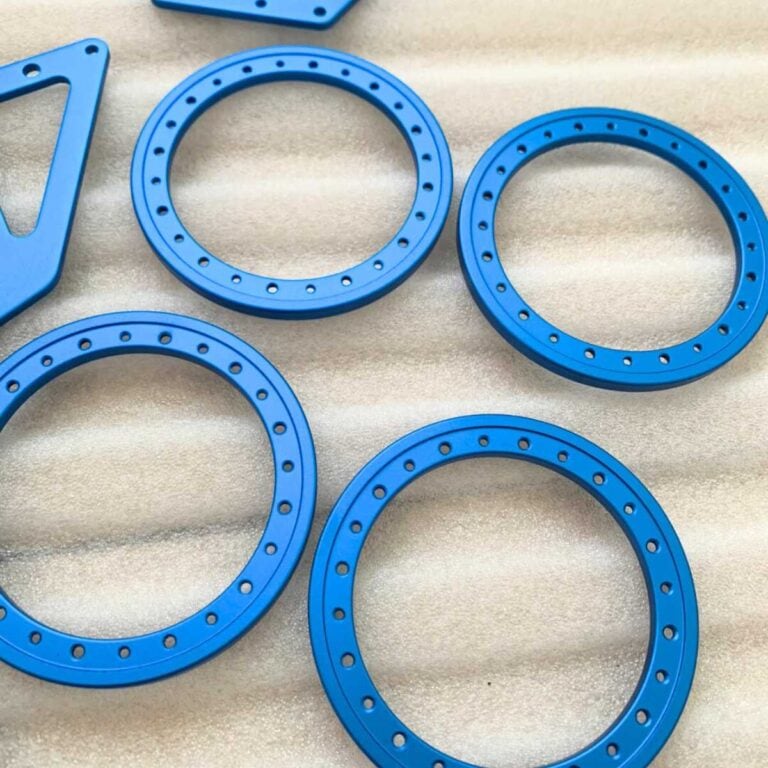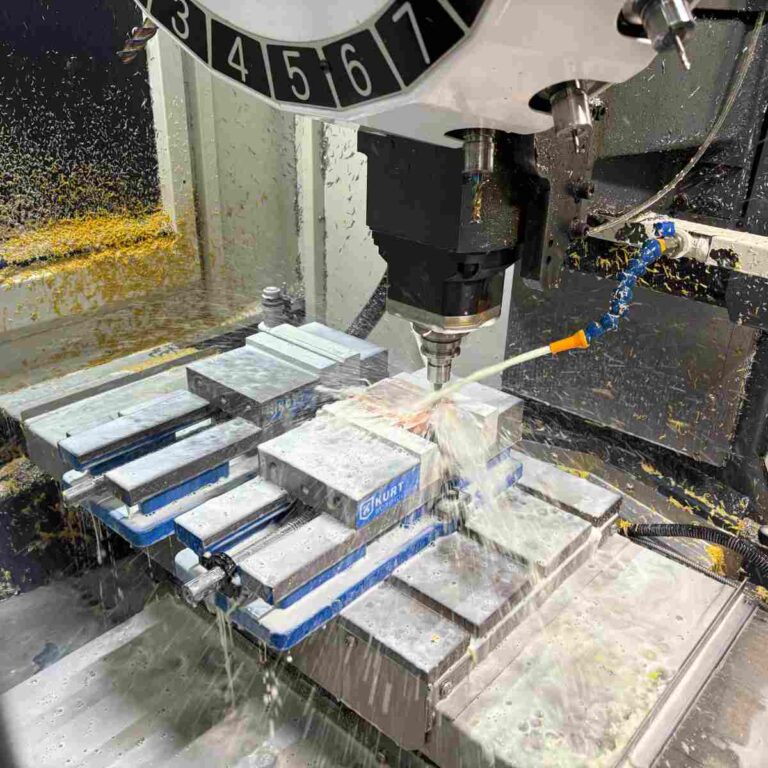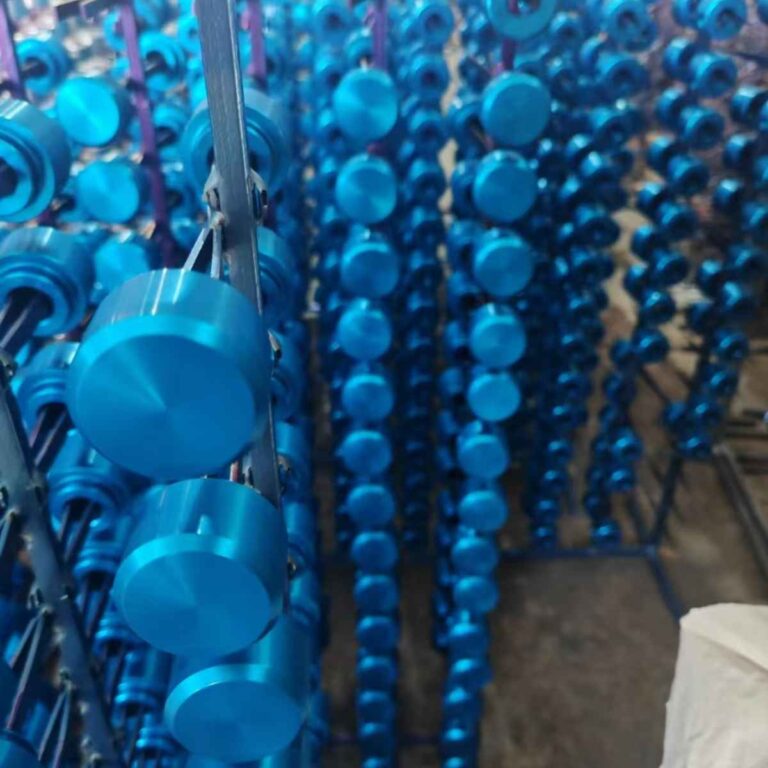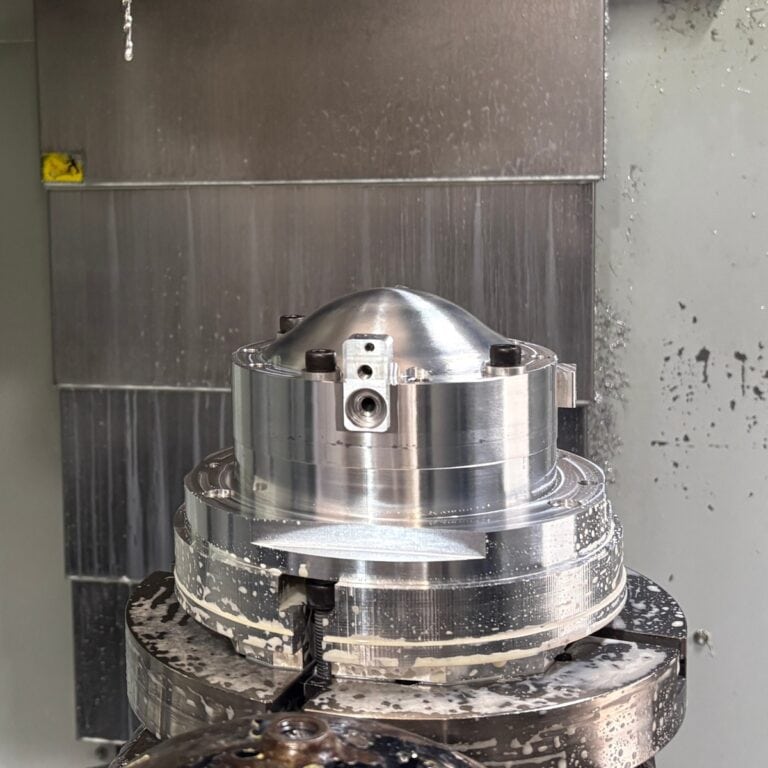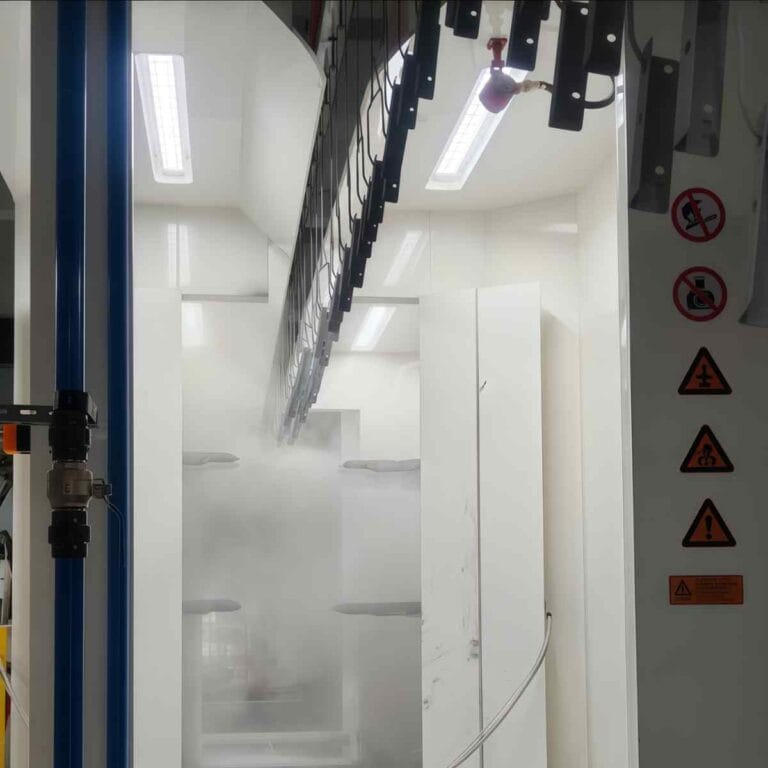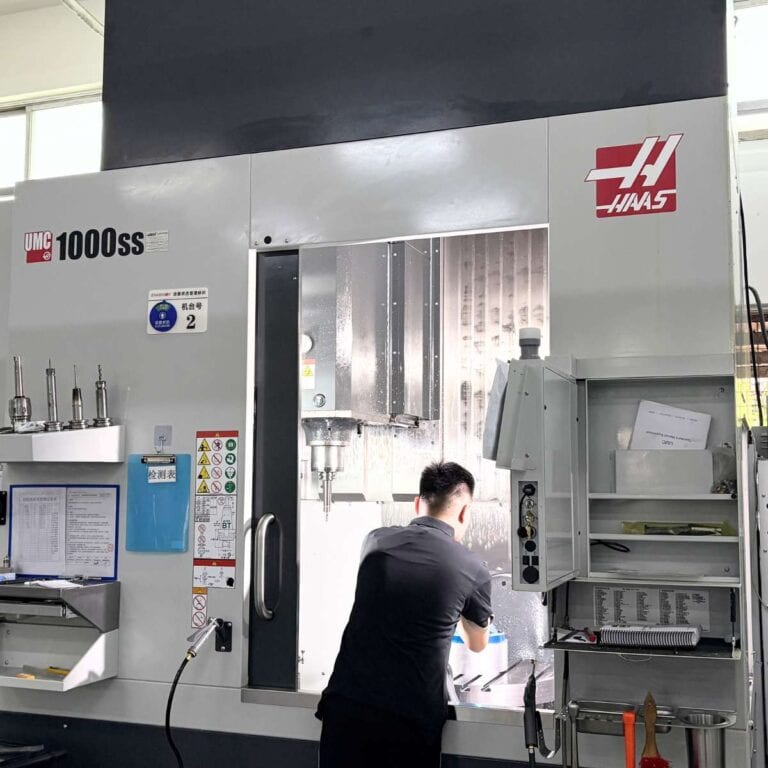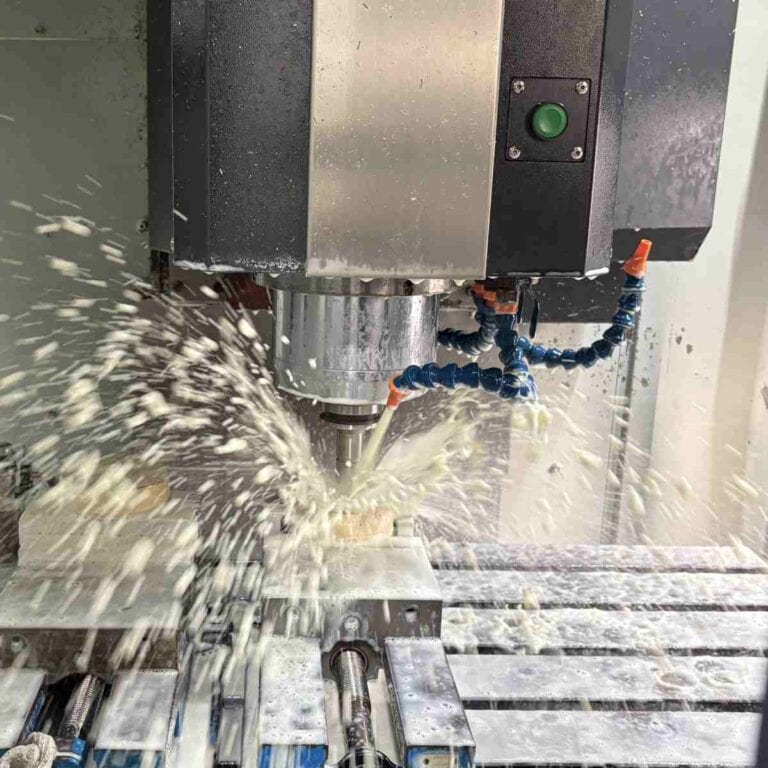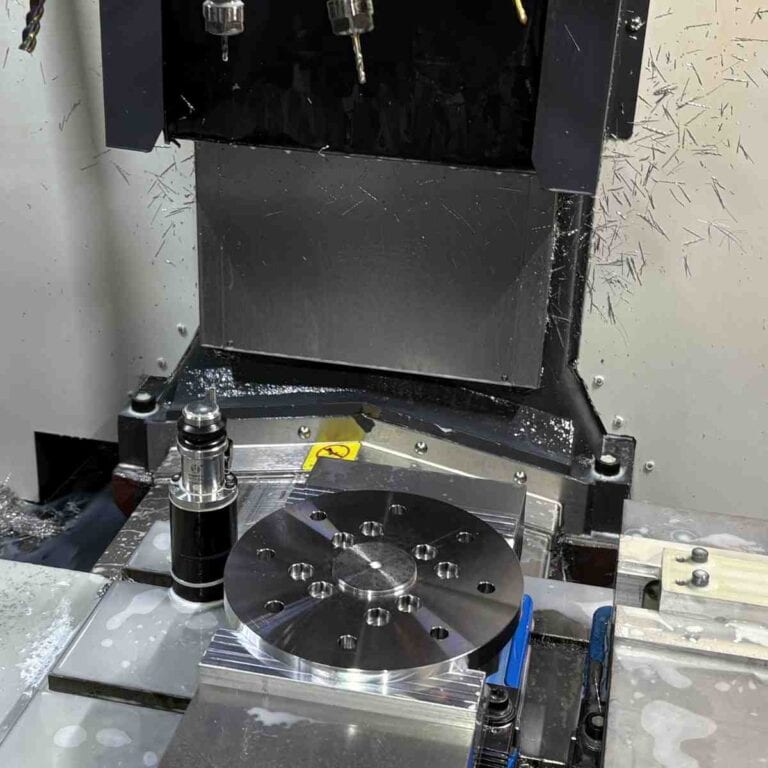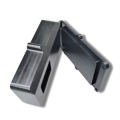The first article inspection report (FAIR) is the key link to ensure that CNC machined parts meet the design specifications. It is not only a necessary tool to meet the compliance requirements of high-standard industries such as aerospace and medical, but also an important guarantee for enterprises to discover problems, reduce batch risks, and save costs. I will take you to deeply understand what the first article inspection report is, its value in actual production, its core content, and the trend of digital development, to help you understand why every CNC machined part cannot be separated from the first article inspection.
What Is First Article Inspection
In the field of CNC machining, first-article inspection is to conduct comprehensive and systematic inspections on the first batch of parts produced before mass production to ensure that they strictly meet customer specifications and engineering drawing requirements. This process not only helps to confirm the effectiveness of processes, equipment and operations, but also discovers potential problems in the early stages, thereby avoiding the subsequent waste of hundreds or thousands of unqualified products. According to statistics, after implementing compliant first-article inspections, the batch return rate can usually be reduced by more than 60%.
Definition And Purpose
First Article Inspection (FAI) is to ensure that the production process and tooling have the ability to stabilize mass production by measuring the full size and full characteristics of the first or first batch of samples. It can effectively avoid the generation of large-scale defective products.
AS9102 Standard Overview
In the aerospace and high reliability industries, the AS9102 standard is the authoritative basis for performing first article inspection. The standard requires recording three forms:
Form 1: Part and Assembly Numbers
Form 2: Materials, specifications, and functional testing
Form 3: Design Characteristics and Measurement Data
The Significance Of The Bubble Drawing
The bubble drawing is an important part of the first article inspection report. Each dimension and feature is numbered on the drawing and corresponds to Form 3 item by item to ensure the comprehensiveness and traceability of the inspection.
Through these steps, first-article inspection not only ensures the qualification of the first batch of parts, but also provides a reliable quality basis for subsequent mass production.
Scenarios And Industries Where First Article Inspection Is Applicable
In the field of CNC machining, first article inspection is not just an optional process, but a necessary means to ensure production quality and compliance. It is mainly used in high-risk, high-precision industries and any scenario where production conditions change significantly.
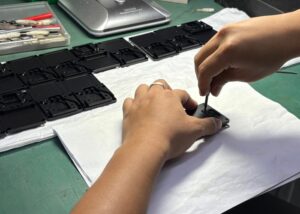
When I manage production projects, I always insist on performing first article inspection at the following key occasions:
Aerospace and Defense: These fields have extremely high requirements for parts tolerance and reliability. Any dimensional error may affect flight safety. According to the AS9102 standard, first article inspection is a mandatory requirement when a new part batch is put into production or when the process is changed.
Medical equipment and high-precision electronics: For example, medical implants or precision detection equipment, the required dimensional accuracy is usually within ±0.01mm. Through first-article inspection, material batches, process parameters and equipment status can be verified at an early stage, reducing the risk of scrapping subsequent batches.
Changes in production processes, design adjustments, and resumption of production after suspension: When the process route is adjusted, the product design is revised, or the equipment is relocated, first-article inspection must be performed first to confirm that all processes still meet the specifications under the new conditions. Data shows that when production is resumed after suspension for more than two years, the average failure rate of batches without first-article inspection is 35% higher.
In these critical applications, first article inspection not only helps verify production capabilities, but also is an important basis for ensuring trust and compliance throughout the supply chain.
The Core Content Of The First Article Inspection Report
The first article inspection report generally consists of four core parts: part number responsibility, product responsibility, characteristic responsibility and additional records. Each part has clear functions and requirements to ensure that the design specifications, process flow and inspection data are fully consistent. Through these rigorous contents, I can systematically verify all manufacturing processes before mass production, reduce rework risks and improve customer trust.
A standard first article inspection report usually contains the following core contents, each of which has different data recording and traceability responsibilities:
Part Number Responsibility (Form 1): This is used to identify the inspected part number, batch, related subcomponents, and product series. It is the basic information for the entire report, ensuring that each data point corresponds to a specific part. According to the AS9102 standard, the accuracy of filling in this part must reach 100%.
Product Liability (Form 2): Record all applicable materials, processing, heat treatment and functional testing requirements. For example, when I fill out Form 2 for an aerospace project, I need to clearly specify the specification number of each special process (such as anodizing or electroless nickel plating) to avoid subsequent disputes.
Characteristic responsibility (Form 3): List all key characteristics, dimensions, tolerances, design requirements and measured results of the parts in detail. Each dimension must correspond to the bubble chart number to ensure that the verification process is traceable. Statistics show that more than 90% of dimensional deviations can be found and corrected in Form 3.
Additional records: including the bubble drawing, inspector signature, inspection date and customer approval documents. These materials are the evidence chain of the entire inspection process and must be fully archived during internal and external audits.
Through these modular forms and records, the first article inspection report not only verifies the compliance of the product, but also lays a clear quality baseline for mass production. I believe that a rigorous FAI report is an indispensable quality assurance for any high-precision manufacturing project.
First Article Inspection Process Steps
In my many years of CNC machining projects, the first-article inspection process is the core operation to ensure the quality of each batch of parts . It specifically includes four parts: preliminary planning and process development, mass production of the first piece, data collection and measurement, report generation and customer review. Each step revolves around the same goal: to use scientific methods to verify whether the production process meets the design requirements. By fully executing these processes, I can find more than 90% of potential quality problems before production starts, avoid batch rework and delivery risks, and improve customer trust and project success rate. Below I will break down the key operations and importance of each link in detail :
Preliminary Planning And Process Development :
I will first prepare process documents and inspection plans based on customer drawings, material specifications and process flow, and clarify the key characteristics, measurement methods, equipment and tolerance requirements that need to be verified. Scientific planning can reduce the deviation rate of later measurement by 30%.
First Batch Production :
Produce at least one first batch of products at one time through the same process as the formal batch (such as CNC turning and milling or injection molding), ensuring that the process conditions and parameters are reproducible, and trial production or manual correction is not allowed.
Data Collection And Measurement :
I usually use instruments such as coordinate measuring machines (CMMs), height gauges, projectors, etc. to verify all dimensions, geometric tolerances, and surface roughness item by item, and take photos of the inspection site when necessary. The measurement results are usually accurate to ±0.005–0.01mm, and 100% data is recorded.
Report Generation And Customer Review :
All test results, process records, part responsibility (Form 1), product responsibility (Form 2), characteristic responsibility (Form 3) and bubble charts are summarized to generate a complete FAI report, which is then reviewed and approved by the quality manager or customer representative as the basis for mass production release.
This process is not only a prerequisite for customer acceptance, but also significantly improves batch consistency. In multiple aviation and medical projects, I have reduced the mass production failure rate by more than 60% through rigorous first-article inspection, ensuring that each batch of products meets the highest quality standards.
Commonly Used FAI Forms And Standards
In my CNC machining projects, the first article inspection often uses three AS9102 forms (Form 1, 2, and 3) to record part number, product responsibility, and characteristic measurement respectively. Some industries also need to combine ISO9001 or customer-specific forms to ensure standard consistency. Balloon Drawing is used to accurately match all inspection characteristics with drawings, which is an important part of ensuring report accuracy. By standardizing these forms and standards, I usually control the first article error rate within 5%, improve customer trust and mass production success rate.
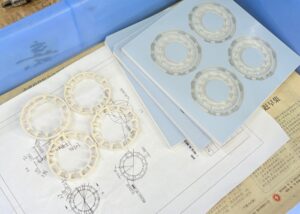
AS9102 Three Forms (Form 1, Form 2, Form 3)
Form 1 (Part Number Responsibility) : Clarify part number, version, and manufacturing batch information to help customers identify the traceability source at a glance.
Form 2 (Product Liability) : Lists all materials, special processes, heat treatments, and certification status, especially for parts requiring high reliability.
Form 3 (Characteristic Responsibility) : Record each dimension, geometric tolerance, and performance data, and compare them with design requirements to ensure full inspection coverage.
In the aerospace project I led, the three tables were used together to stabilize the batch inspection pass rate at over 98%.
ISO Standards And Industry-Specific Forms
In addition to AS9102, many customers request custom forms that comply with ISO 9001 or ISO 13485 standards.
Especially in the medical equipment and precision electronics industries, records of biocompatibility, material batches, process verification, etc. are often added, and the amount of data is more than 30% more than that of ordinary industrial parts.
These industry-specific standard forms place higher demands on process traceability, and I usually recommend confirming the template with the customer in advance to avoid rework later.
Balloon Drawing Requirements
The bubble diagram identifies all the design features of the part with numbers, and each number corresponds to Form 3.
It not only visually displays the inspection scope, but also provides a clear basis for comparison during customer review and subsequent re-inspection.
In an electronic housing project, I used bubble diagrams to mark more than 150 dimensional features. Combined with the automatically generated FAI report, the review efficiency was greatly improved, and the customer passed the entire process without any objections.
By using these forms and standards in a standardized manner, I can detect more than 95% of potential deviations during the first article production stage and clearly record all verification information in the report, thereby building customer trust in quality, delivery time and compliance.
Digital Tools And FAI Software
In my opinion, digital tools and FAI software have become an indispensable part of the CNC first-article inspection process . They directly improve efficiency, reduce human errors, and provide data integrity for high-standard industries such as aerospace and medical. After using these tools, I have reduced the preparation time of FAI reports by an average of 40%, and the approval rate has increased to more than 98%.
The following are the three major functional modules I often use and their actual results:
Software That Automatically Generates FAI Reports
In my projects, I prefer software tools that are compatible with the AS9102 standard (such as Net-Inspect and High QA). They can automatically generate complete reports including Form 1, Form 2, and Form 3 based on the input design data and measurement results.
This automated generation method can significantly reduce manual entry errors. During a batch first-piece inspection of aviation parts, I directly imported CMM data through the software and achieved 100% automatic filling of dimension records.
Visual Error Prevention Function
Advanced FAI software provides functions such as automatic numbering of bubble charts, real-time comparison of characteristics and measurement data, and deviation highlighting.
For example, in the inspection of a batch of medical devices, when a certain dimension exceeds the tolerance of ±0.02mm, the system immediately issues a red warning, avoiding misjudgment in subsequent reports.
This fool-proofing mechanism reduces manual review time by at least 30%.
Electronic Data Storage And Version Management
Digital tools support centralized cloud storage of FAI data, bubble charts, and process records, and provide complete version management, sign-off traceability, and permission control.
In many high-precision projects, I used the version control function to compare every change before and after the design update to ensure the accuracy of the inspection basis.
At the same time, customers can directly access the latest reports through electronic links, improving delivery transparency and trust.
Through these digital tools, I not only achieve higher first-article inspection efficiency on the production side, but also provide customers with more complete quality traceability and full life cycle data management.
The Difference Between FAI, PPAP And LAIR
In the CNC machining projects I have actually participated in, many customers are easily confused about the three quality verification methods of FAI, PPAP, and LAIR . In order to quickly clarify during the technical review, I will first explain to the customer their definitions, scope of application, and differences in report content. This section is to clearly answer: What are the differences between FAI, PPAP, and LAIR?
| project | FAI (First Article Inspection) | PPAP (Production Part Approval Process) | LAIR (Final Article Inspection Report) |
| definition | Full-size and process verification of the first batch of production parts according to AS9102 standards. | Used for comprehensive production verification in the automotive industry, covering more than 18 items of information such as samples, process capabilities, and material certification. | Complete inspection of the last batch of products at the end of production, factory relocation or contract completion. |
| Main application industries | Aerospace, Defense, Medical Devices | Auto parts, mass production supply chain | Precision machinery and military industry contract performance |
| Common standards | AS9102 | AIAG PPAP Manual, APQP | Usually follows the AS9102 format or customer-defined form |
| Report Content | Form 1/2/3, bubble chart, measurement record | Measurement system analysis (MSA), potential failure mode analysis (PFMEA), samples, process capability and other documents | Dimensional measurement, material certification, final status confirmation, similar to FAI but for end-of-production verification |
| Key Purpose | Verify that the first piece meets the design specifications and confirm mass production capabilities | Verify the entire production process, process control and supply chain stability | Confirm that products meet original specifications at end of production or delivery |
| Applicable ratio | Aerospace field>90% use | About 85% of the automotive supply chain uses | About 10% of precision machinery and military industry are used |
| Complexity | Medium, three tables + bubble chart | High, 18+ documents, the most complex data volume and verification requirements | Medium, close to FAI |
| Common use occasions | New product launch, process change, resumption of production after suspension for more than two years | Mass production start-up, supply chain verification | When production is stopped, factory is closed, contract performance ends |
Processing Procedures For Defective Products
In the CNC precision machining projects I participated in, the process of handling defective products is the core link to ensure delivery quality and customer trust . Many people will ask: What should I do if the first or batch of parts fail the inspection? In this section, I will give a direct answer: Defective products must go through three clear stages: correction, rework, and re-inspection, none of which can be missing .
According to my statistics, about 15% of the first products need to be corrected due to size or surface quality deviation. Below I will explain each step in detail:
Correction Of Dimensional Or Characteristic Deviations
When I find that the size, geometric tolerance or material properties of a part do not match the drawing, I will first check it using three coordinates or measuring tools to confirm the deviation range.
Corrective measures should be taken for parts that exceed the tolerance, such as local secondary processing, adjustment of tooling and fixtures, or optimization of tool paths.
For example, I recently made an aviation bracket. During the initial inspection, the hole diameter was 0.08mm out of tolerance. I first corrected it by partially boring the hole, and then conducted a second measurement to verify it.
Rework And Repair Process
If the deviation cannot be corrected by simple corrective measures (such as insufficient surface hardness or coating peeling), a rework process needs to be initiated.
I usually open a “Non-Conforming Product Report” first, and then arrange for rework or repair after evaluation by the engineering and quality departments.
Each rework step must be recorded on the process card and accompanied by a process confirmation signature.
Report Update And Re-Inspection
All reworked and corrected products must have an updated First Article Inspection Report (FAIR) or in-process inspection records.
I will add the re-measured data to the original report, marking the revised batch and responsible person.
After completing the second inspection and confirmation, submit it to the customer for approval to ensure that all data is closed.
Through this process, I have shortened the repair cycle of defective products by an average of 30% in the past two years, while ensuring that the final deliverables meet the specifications 100%. This is also the most basic quality assurance measure for every high-precision industry project.
FAQs
What Is The Purpose Of A First Article Inspection Report?
The purpose of a First Article Inspection Report is to verify that the first parts off the production line fully meet all design specifications and customer requirements. In my experience, it acts as a baseline reference to ensure that future production maintains consistent quality, reducing rework rates by up to 30% in aerospace and medical projects.
What Is The First Article Inspection Documentation?
The First Article Inspection documentation includes Forms 1, 2, and 3 as per AS9102. I prepare these to record part identification, materials, processes, dimensions, and results. This documentation is essential evidence that the parts comply with engineering drawings, tolerances, and quality standards before mass production begins.
What Is The First Article Approval Report?
A First Article Approval Report formally confirms that the inspected part has passed all criteria, allowing full-scale production to start. In my workflow, this report combines dimensional checks, material certifications, and customer sign-off. It serves as a controlled record showing compliance with contractual and regulatory requirements.
What Is The Difference Between PPAP And First Article Inspection Report?
PPAP (Production Part Approval Process) is more common in automotive and involves broader process validation, while a First Article Inspection Report focuses on verifying the first manufactured item against specifications. I often explain to clients that FAI uses AS9102 standards, while PPAP uses APQP and multiple submission levels.
Is PPAP The Same As FAI?
No, PPAP is not the same as FAI. In my experience, FAI is typically used in aerospace to validate part conformity, while PPAP is used in automotive to approve the entire production process. Though both ensure quality, they differ in scope, standards applied, and documentation required.
Conclusion
The first article inspection report is a basic tool to ensure that CNC machined parts meet the design specifications. It not only verifies that the dimensions, processes and materials meet the requirements, but also provides a quality benchmark for subsequent mass production. By standardizing the implementation of FAI processes and records, companies can reduce the risk of rework, improve customer trust and compliance. In the field of high-precision manufacturing, there is no reliable mass delivery without first article inspection.

